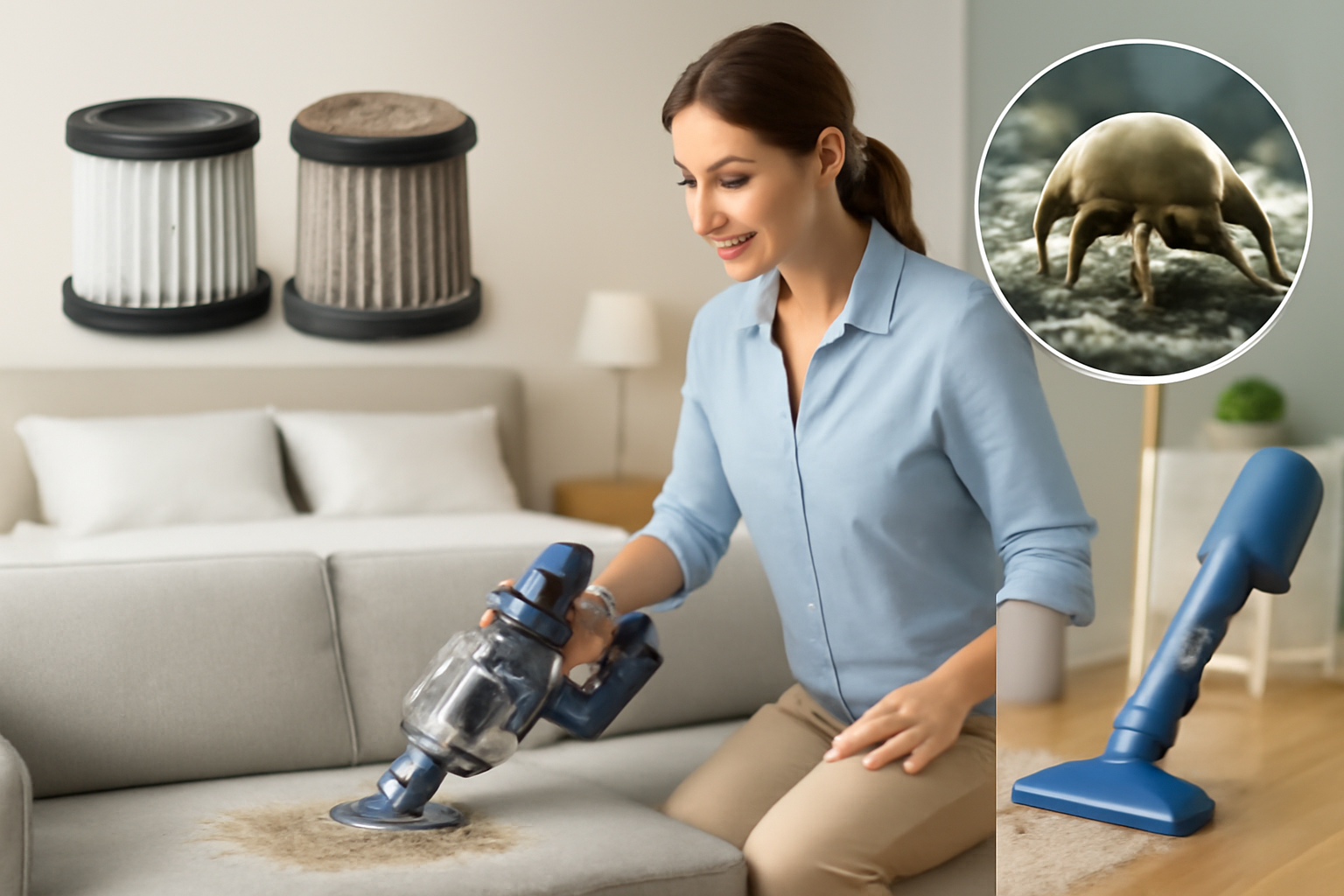
Dust mites are a hidden health risk that may be thriving in your vacuum cleaner.
Dust mites are microscopic pests that feed on dead skin cells and are commonly found in carpets, upholstery, and bedding. What most people don't realize is that their vacuum cleaner can also become a breeding ground for these allergens. If your vacuum isn't cleaned properly, dust mites and other debris can build up, potentially being released back into the air as you clean, affecting your health.
Why is it crucial to regularly clean your vacuum to prevent dust mites?
When you vacuum, you're pulling up dust, dirt, and sometimes even dust mites. If your vacuum cleaner lacks a proper filtration system, these tiny allergens can be released into the air, causing allergic reactions, especially in sensitive individuals. Regularly cleaning and maintaining your vacuum, especially the filter, helps reduce the buildup of these harmful particles.
How to prevent dust mites from thriving in your vacuum cleaner
Clean your vacuum regularly: After each use, empty the dustbin and clean the filter to prevent dust mites from accumulating. Regular maintenance ensures your vacuum is effectively removing debris and not contributing to the problem.
Use a HEPA filter: A vacuum cleaner equipped with a HEPA filter can capture the tiniest particles, including dust mites and pet dander. This helps ensure that your vacuum is not just sucking up dirt but also trapping harmful allergens, making your home cleaner and safer.
Vacuum upholstery and bedding: Dust mites love to hide in fabrics, so make sure to vacuum your upholstery and bedding regularly. A vacuum with the right attachments, like a motorized brush, can effectively remove dust mites from these surfaces.
For more tips on how to deal with allergens in your home, visit The American Academy of Allergy, Asthma & Immunology for expert guidance.
Pet Hair Removal: If you have pets, choosing a vacuum cleaner that excels in pet hair removal is essential. Pet hair can easily accumulate on the floor, furniture, and baby’s toys, which can trigger allergies and respiratory issues. Look for vacuums with motorized brush heads or specialized pet hair attachments designed to tackle fur and prevent it from being spread throughout the home.
For more expert insights into choosing vacuums for pet hair, check out The Allergy Foundation for detailed advice on indoor air quality.
Allergen-Free Storage: Ensure that the vacuum you choose has an allergen-proof dustbin or bag to prevent dirt and allergens from escaping while emptying the container. Some vacuums come with bagless systems equipped with advanced filters that ensure allergens remain contained during disposal.
Safety Features: Since babies are curious and tend to explore, safety features are important. Choose a vacuum cleaner with child-proof locks or safe power buttons that prevent accidental start-ups. It’s also important that the vacuum is made from non-toxic materials, especially if your baby has sensitive skin or is prone to allergies.
Conclusion: The Best Vacuum Cleaner for Homes with Babies
When you have a baby at home, the right vacuum cleaner is not just about convenience but also about keeping your home clean, safe, and free from allergens. Look for features such as HEPA filtration, low noise operation, pet hair removal, and easy maneuverability to keep your baby’s environment clean and healthy. A vacuum cleaner with these features can help you maintain a safe space for your little one to play and explore.
Explore the best vacuum cleaners for families with babies at www.lxvacuum.com for expert reviews and top-rated models.

















